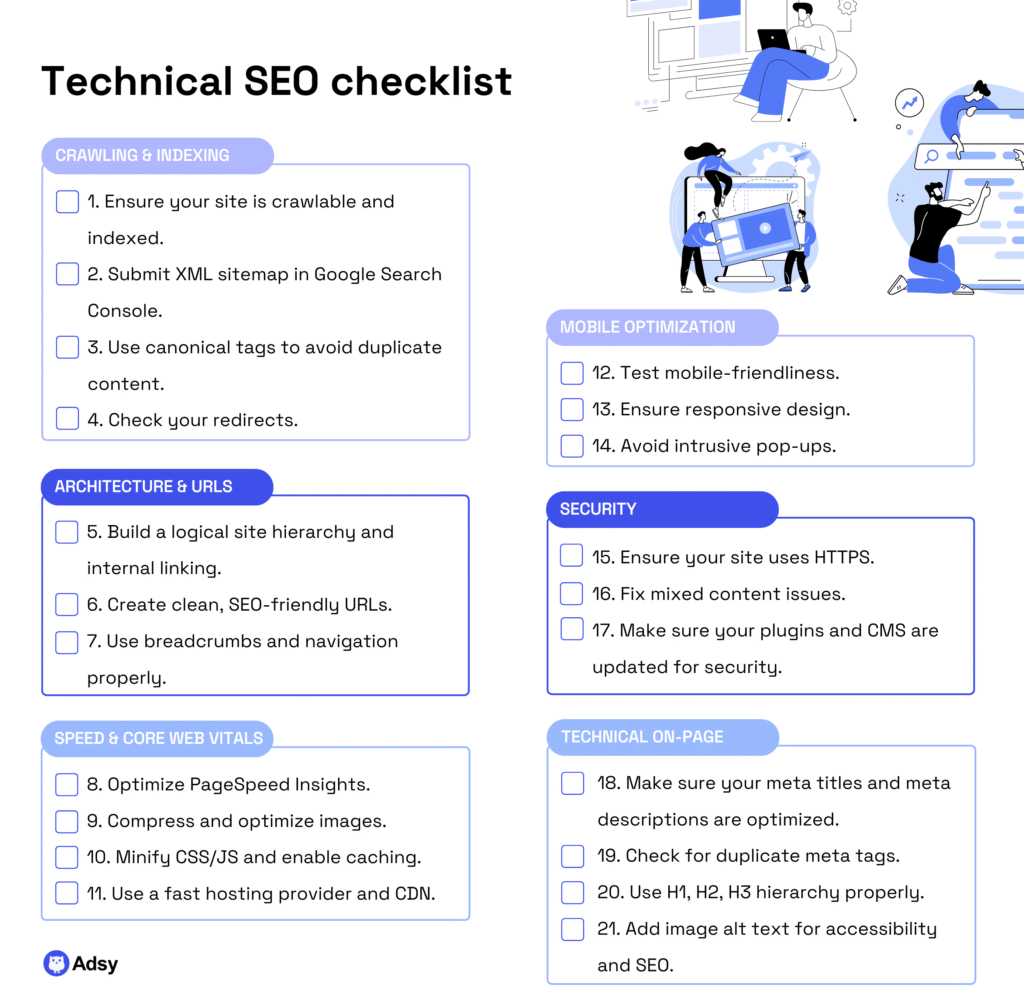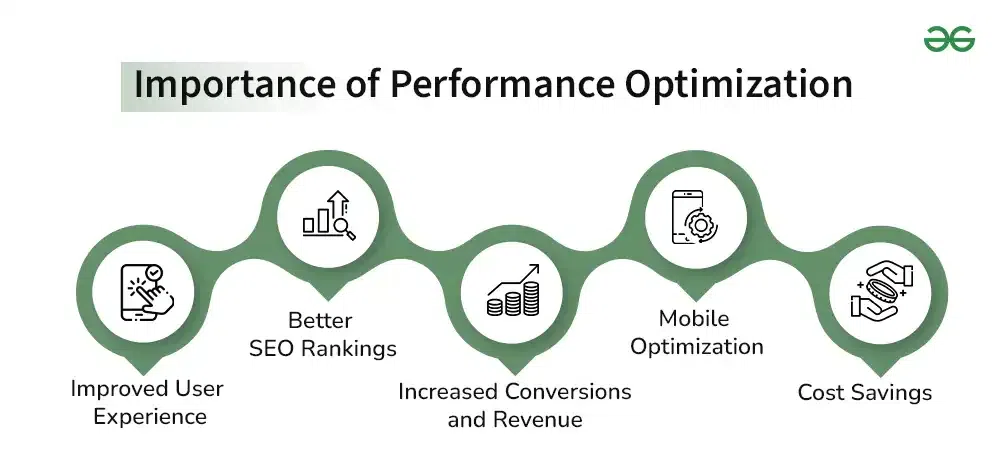Technical SEO defines the set of practices that structure a WordPress site for visibility, crawlability, and performance in search engines.
It governs how search bots read and interpret site content through elements such as site structure, indexing rules, and technical health.
WordPress offers flexibility, but this flexibility often introduces challenges: heavy plugin use, complex themes, and hosting misconfigurations that reduce efficiency.
Addressing these issues requires a systematic approach that aligns architecture, speed, security, structured data, and specialized SEO tools.
This article outlines practical best practices that strengthen the technical foundation of WordPress sites and improve long-term search performance.
Tl; DR – Technical SEO Checklist

Site Architecture and Indexability
Site architecture in WordPress defines how content is structured for both users and search engines.
A clean permalink structure keeps URLs short, descriptive, and easy to crawl, supporting a clear hierarchy across categories and pages.
XML sitemaps guide search engines through the site, while robots.txt directs crawlers toward priority sections and away from low-value areas.
Canonical tags resolve duplication by signaling the preferred version of a page, protecting indexing consistency.
Mobile-first indexing further requires designs and content delivery to adapt smoothly across devices so search engines register the same signals regardless of screen size.
Together, these practices establish indexable foundations that strengthen technical SEO in WordPress.
Performance Optimization

Performance optimization in WordPress begins with controlling page speed. Images benefit from compression and responsive formats, while lazy loading reduces initial load weight.
Minification of CSS, JavaScript, and HTML streamlines delivery for faster rendering.
Hosting quality directly impacts server response time, so choosing environments with optimized configurations strengthens reliability.
Caching layers, from browser caching to object caching and CDNs, distribute load and accelerate content delivery.
Core Web Vitals, largest contentful paint, first input delay, and cumulative layout shift serve as practical benchmarks for assessing performance impact on rankings.
Together, these measures keep a WordPress site technically efficient and search-friendly.
Technical SEO isn’t just about plugins; it’s about how your site is built.
That’s why many growth-focused brands turn to experts like IT Monks, who specialize in custom WordPress solutions that are optimized from the ground up for performance and search visibility.
Security and Technical Health
Security and technical health define the reliability of a WordPress site, both as a system and an SEO asset.
HTTPS with SSL/TLS certificates establishes encrypted connections, which search engines read as a ranking signal while also protecting user data.
Any site handling transactions or personal information benefits from a properly configured certificate tied to its hosting environment.
Ongoing maintenance is equally important. WordPress core updates often patch vulnerabilities, while theme and plugin updates keep third-party code aligned with security standards.
Outdated components increase the chance of exploits that can lead to downtime or blacklisting, both of which damage visibility in search results. A disciplined update routine prevents such risks.
Crawling efficiency depends on link integrity. Broken internal links or recurring 404 errors reduce crawler efficiency and waste crawl budget.
Regular scans help locate faulty URLs, while 301 redirects preserve authority signals and sustain user journeys.
Combined with monitoring tools that track uptime, scan for malware, and flag anomalies, these practices create a structured safety net for both performance and SEO.
Schema Markup and Structured Data
Schema markup and structured data enrich the way search engines interpret WordPress content.
By embedding schema types such as articles, products, or events, site owners define content purpose in machine-readable form.

Structured Data & Schema Markup Example
This improves how pages are presented in search results, making them eligible for enhancements like star ratings, event listings, or product details.
Rich snippets generated from schema increase search visibility and strengthen relevance signals. For a WordPress site running an online store, product schema highlights price and availability.
For publishers, the article schema specifies headline, author, and publishing date, helping content stand out among plain text results.
These enhancements create a stronger connection between structured code and visible SERP features.
Implementation in WordPress can be streamlined through plugins or custom code.
Tools such as Yoast SEO, Rank Math, or dedicated schema plugins add structured data without requiring manual markup for each post.
Validating schema through Google’s Rich Results Test and Search Console ensures correct implementation and prevents errors that could block enhancements.
When integrated effectively, schema markup works as an SEO amplifier that extends beyond content keywords into structured meaning.
Essential WordPress SEO Tools and Plugins
WordPress SEO tools and plugins streamline technical optimization while supporting lean site management.
Comprehensive plugins, such as Yoast SEO, Rank Math, or All in One SEO Pack, represent some of the most effective WordPress SEO plugin options available today. They provide detailed controls for metadata, sitemaps, and indexation rules.
These tools also offer on-page guidance that aligns content with technical signals without requiring manual code adjustments.
Performance tools contribute to speed and stability. WP Rocket and Autoptimize handle caching, minification, and script optimization, reducing load time across devices.
Combined with browser caching or CDN integration, these plugins improve delivery while keeping server strain low.
Monitoring remains an essential layer. Google Search Console highlights crawling, indexation, and structured data issues, while Google Analytics tracks user behavior and performance impact.
When combined, these platforms provide insight into how technical improvements translate into visibility and engagement.
The key is balancing plugin usage with efficiency, choosing a minimal set of tools that strengthens SEO without slowing down the site.








